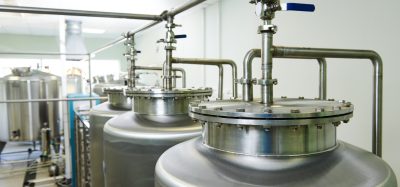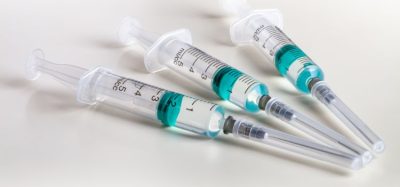Medical devices: recent developments and the potential impact of Brexit
Posted: 18 December 2019 | Paul Ranson (Morgan Lewis) | 1 comment
The current regulatory system for medical devices in the UK, as an EU member state, is complex enough without the uncertainties surrounding Brexit. In this article, legal advisor Paul Ranson reviews the current and forthcoming regimes and how Brexit may impact manufacturers and regulators working in this space.


THERE ARE MORE than 500,000 types of medical and in vitro diagnostic devices on the EU market, ranging from sticking plasters and scalpels to pacemakers and breast implants. These are classified under the EU medical device laws, discussed below, according to risk from low risk (Class I) to high risk (Class III) devices. In vitro diagnostic medical devices (IVDs) perform tests on samples and include HIV blood tests, pregnancy tests and blood sugar monitoring systems for diabetics. Other than Class I medical devices (and Class A IVDs), which the manufacturer can self-certify, medical devices can only be placed on the EU market if a Notified Body (NB) establishes that a device complies with certain requirements set out in the legislation. Such compliance is evidenced by the placing of a ‘CE-mark’ on the product. This CE-mark allows the product to be sold throughout the EU.
The new regime
A product failure in the Poly Implant Prothèse (PIP) breast implant was the principal driver behind the reform of the current legislation – the Medical Devices Directive (93/42/EC) (MDD), the Active Implantable Medical Devices Directive (90/385/ EC) and the In Vitro Diagnostic Medical Devices Directive (98/79/EC) (the Directives).
The two regulations will mean greater scrutiny of technical documentation including stricter requirements on clinical evaluation and in-market follow-up through the supply chain, including unique identifiers”
The new European Medical Devices Regulation (MDR) and the In Vitro Diagnostic Medical Devices Regulation (IVDR), which replace the Directives, were subject to a three and five-year transition period, respectively, from 2017 during which time manufacturers need to update their technical documentation and processes to meet the new requirements. The MDR will come fully into force on 25 May 2020 and the IVDR two years later. Existing CE-marks will continue to be valid for a period of five years subject to a backstop under the MDD of May 2024. A regulation, unlike a directive, is directly enforceable in each Member State, so national implementation is not necessary, thus avoiding national discrepancies in interpretation. The two regulations will mean greater scrutiny of technical documentation including stricter requirements on clinical evaluation and in-market follow-up through the supply chain, including unique identifiers. In particular, the regulations establish a degree of EU-level control of high-risk devices, extend to certain previously unregulated aesthetic products, improve the provision of information to patients – including establishing a new European database of medical devices and device investigations – and require manufacturers to collect data about device performance and EU countries to coordinate more closely in relation to market surveillance (although it has recently been announced that this ‘EUDAMED’ database of devices on the EU market will be delayed for two years). Particularly with IVDs, many more will require NB approval than at present.
Notified Body crisis
The MDR and the IVDR also impose more stringent rules on NBs, including establishing the right and duty of these bodies to conduct unannounced audits. Previously, NBs performed more of a consultative role to help manufacturers meet CE-mark requirements, but under the new MDR and IVDR, NBs effectively enforce the new regulations.
Aside from the increased regulatory exposure, the compensation liability of the NBs was examined in a recent European Court of Justice (ECJ) case on the role of NBs in the PIP case. The German NB TÜV Rheinland was responsible for granting the CE-marking for the PIP products. In its judgment, the ECJ clarified NBs’ obligations, saying that they must “take all the steps necessary” to guarantee they meet their obligations to ensure the device is in conformity. A French appeals court also ordered TÜV Rheinland to pay €60 million ($65.50 million) immediately to 20,000 victims of the faulty breast implants.


In response to these pressures, many NBs are voting with their feet. NBs were required to reapply for NB status under the new regulations. There are currently still some 50 or so NBs under the old directives (already only a fraction of those originally approved) but currently only seven have been approved under the MDR (the Commission anticipated that at least 20 would be ready by the year end). In June 2019, for example, Lloyd’s Register (LRQA) announced that it would be withdrawing NB services for medical devices and IVD manufacturers. LRQA was one of the NBs traditionally handling a large share of the currently CE-certified IVDs in the EU. The increased requirements and numbers of devices needing their approval, especially with IVDs, will inevitably further increase NB workloads and decrease NB availability. It is feared that this decrease in availability to review devices, particularly in higher risk classes, will delay product approvals and slow device entry-to-market. In theory, a manufacturer whose original NB is no longer eligible to certify their devices can switch NBs while they still have a valid CE certificate through a shortened certification route. In practice, the new NB taking on the manufacturer will audit the client and review their documentation. These steps take time and in the current European regulatory environment in which NBs are overloaded with work, this will result in longer lead times. Despite the industry pleading for a longer timeline, the Commission is essentially sticking with the current schedule; a four-year transitional period until 26 May 2024, before they are required to meet the new standards.
Impact of Brexit
Assuming the UK enters a transition phase from 31 January 2020 until 31 December 2020 (or beyond), the UK would continue to be bound by the current EU laws. If, at the end of the transition phase, the UK and EU do enter into a free trade agreement, which includes medical devices, then that new regime would apply.


However, in the event of a no-deal Brexit, even though there would be a level of legislative continuity, from the day the UK leaves the EU, the roles and responsibilities of those manufacturing and supplying medical devices and IVDs would change.
UK-based Authorised Representatives (the EU-based person responsible for compliance by a device manufacturer not established in the EU) will no longer be recognised in the EU. Conversely, under UK legislation a new role, known as a UK Responsible Person, will be created for manufacturers based outside the UK. Additionally, all devices will require registration with the MHRA within various deadlines from the UK’s exit.
However, the challenge following Brexit (without a deal or with a deal that no longer recognises UK NBs) may well be yet more pressure on the availability of NB capacity. From the perspective of those wishing to continue to sell the product in the UK:
- Certificates that have already been issued by UK-based NBs prior to the UK’s departure from the EU will continue to be valid for the UK market. The MHRA will continue to oversee the activities of UK-based NBs.
- If you wish to place a new device that requires an NB to carry out a conformity assessment onto the UK or EU market, you will need to use an NB based in an EU Member State. Once the conformity assessment has been successfully completed, you can place a CE mark on your device and place the product on the UK or EU market.
- UK-based NBs will no longer be recognised by the EU and can no longer issue or maintain certificates.
- The UK authorities would give UK-based NBs an ongoing legal status and continue to recognise the validity of certificates that they issued prior to the UK’s departure from the EU.
For those wishing to sell in the EU, Brexit, under such circumstances, could have the following consequences:
- If you wish to place a new device that requires an NB to carry out a conformity assessment onto the EU market, you will need to use an NB based in an EU Member State.
- The fact that UK NBs are no longer able to grant CE-marks within the EU may well have a substantial knock-on effect for companies seeking to market medical devices, given the popularity of such NBs, particularly BSI. This means that after Brexit day, manufacturers of these products must have valid CE certificates issued by an EU27-based NB. It has been reported that 45 percent of all medical devices CE marked in Europe, including 70 percent of those sold by non-EU-based manufacturers, use UK NB services. This will obviously exacerbate the shortage of NBs qualified to certify devices under the MDR.
- Finally, until exit day, a trader can put a medical device that is already marketed in an EU country on the market in another EU country, even if not intended by the manufacturer – this is known as a parallel import. After the UK leaves the EU, parallel importing from the EU into the UK will not be possible. Any device that is imported from the EU and placed on the UK market will be treated as a new placing on the market, with all the relevant manufacturer requirements applying to this importer, including the requirement to register the device with the MHRA.
About the author
Paul Ranson is a consultant at the global law firm, Morgan Lewis. His main focus is the regulatory and commercial needs of the pharmaceutical, biotechnology and medical devices sectors.
Issue
Related topics
Brexit, Lab Equipment, Legal, Medical Devices, Regulation & Legislation










This is a very complex situation, there’s no easy way of getting out of it. Nice article